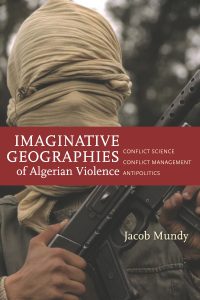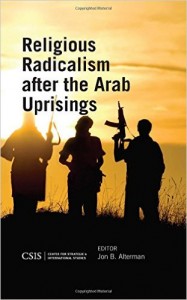Book Review:
There’s no need to repeat here what dozens of glowing reviews written by respected intellectuals have already mentioned elsewhere. But what is worth mentioning is that one of the critical reasons why Robert F. Worth’s A Rage for Order has been so well received is because it is unlike the stifling majority of widespread Western books and media that understate if not overlook entirely the Arab people’s dynamic humanity – a humanity undercut by both their own governments and international actors and institutions. Those privileged enough to be well-acquainted with the Arab world understand that cold objectivity is a crudely limited lens for understanding the region in all its identities, emotional vitality, and spiritual vigor. Few books can rival A Rage for Order’s skill in conveying the Arab people’s vibrancy or the urgency of their dreams and despairs.
What makes A Rage for Order special is its seamless weaving of complex national histories into the diverse stories of people, with each chapter uniquely contributing to a nuanced portrait of the Arab revolutions and their legacies. Although the book’s approachable length at 268 pages is necessarily limited in its narrative time frame, readers will leave the book with fundamental historical and social insights key to parceling between the similarities and differences of various Arab countries and the uprisings they hosted. Perhaps the most consequential insight of Worth’s narrative is that decades of kleptocracy and failed social movements have led to a perceived pervasiveness of Arab fatalism; and yet behind that fatalism exists a search for identity and a social order that guarantees the unalienable demand for dignity and a sense of belonging. As much as this book portrays the continued disappointments among many who continue that search – be they recruits of the so-called Islamic State or victims of ongoing war – A Rage for Order also reveals the desire among many to begin breaking the endless cycles of vengeful violence. Worth enables us to recognize the aspiration among everyday people to pursue a higher form of justice and economic dignity and thereby inculcate a sustainable peace that has too long evaded them.
Chapter Summary:
Chapter 1: One People (Egypt)
A Rage for Order is divided into two parts. Part I details the unfolding of the Arab revolutions across several Arab countries, including Egypt, Libya, Syria, and Yemen, while Part II explores the post-revolutionary landscapes manifested in Egypt and Syria, as well as Tunisia. As the Arab world’s most populous country at over 80 million people, what happens in Egypt matters. The chapter details the follows Worth in Cairo as he illustrates the mass discontentment of various cross-sections of Egyptian society that come together in a unified desire to overthrow the military regime of Hosni Mubarak.
Chapter 2: Revenge (Libya)
Against the backdrop of the recently deposed Muammar Gaddafi regime, this chapter explores the questions of revenge, forgiveness, and justice in an environment void of institutionalized political order. In a series of events, a group of individuals who were imprisoned and ferociously tortured under the Gaddafi regime have now been liberated and hold the very people responsible for torturing and killing their loved ones under arrest. Worth depicts a profound prisoner-captor relationship, posing questions of who possesses the legitimacy of delegating justice under which conditions.
Chapter 3: Sects (Syria)
It is through a story of a childhood friendship shattered by war that Worth illustrates one of the most consequential questions of human history – the manipulation of identity in shaping the attitudes and perceptions of people. Despite its violent sectarian history, Syria was a place where people could coexist. Coexistence proved to be among the first casualties of the Syrian uprising, as communities and leaders alike sought to defend themselves against violence from “others”.
Chapter 4: Prisoners of the Sheikh (Yemen)
Yemen offers a story characterized by political division, foreign interference and extraction, tribal politicking, and the depravities of years-long mismanagement under the reign of the now late Ali Abdullah Saleh. As the poorest country in the region, the uprising in Yemen was less a popular revolt by a wide cross-section of society and more a result of tribal feuds. As the war continues, daily life grows grimmer for the country’s most vulnerable.
Chapter 5: Brothers (Egypt)
As the book progresses into Part II, Worth returns to Egypt to begin exploring the events following the overthrow of long-established regimes. As the only civic group in Egypt with any remarkable political organization and long-standing social presence, the Muslim Brotherhood proved to be the primary beneficiary of the post-Mubarak elections in 2012. But even as it swept national elections and gained the presidency at the cost more secular parties endorsed by the younger generations, the Brotherhood’s hold on power was remarkably fragile. Shrouded in a political opaqueness that contradicted democratic spirit, the Muslim Brotherhood under Muhammad Morsi sought to make existential amends with the very Egyptian military that still had the power to overthrow the Brotherhood regime and restore military dictatorship – something that ultimately came to be supported by many of the very seculars that initiated the overthrow of President Hosni Mubarak.
Chapter 6: In the Caliph’s Shadow (Syria)
The so-called Islamic State is a new manifestation of terror in the Arab world in the sense that compared to other groups, it is actively seeking to make a functioning Islamic Caliphate that proffers state-like services and responsibilities. To that end, ISIS demands a cross-section of labor skills devoted to tasks beyond warfare, which led to its recruiting and appeal among a wider demographic of marginalized, radicalized, and unemployed young people. This chapter follows the story of a Kuwaiti bureaucrat who volunteers for administrative work in ISIS, only to become deployed as a foot-soldier on the frontline, prompting his desire for a way out again.
Chapter 7: Reconciliation (Tunisia)
The book finishes with what many consider to be the most hopeful case for human rights and dignity in the Middle East following the Arab revolutions, Tunisia. The chapter narrates a tumultuous relationship between Beji Caid Essebsi and Rachid Ghannouchi, the respective leaders of the post-Ben Ali secular party Nida Tounes and the Islamist party Ennahda. In the face of continued economic struggles, political assassinations, and terrorist activity, the leaders struggle to reconcile their ambitions within the new government without losing the faith of their parties and the Tunisian people at large.


